Written by Kylie Smith, SNAP-Ed Extension Assistant
With spring upon us, you will start seeing asparagus pop up in the produce section. Asparagus is a long, tree-looking vegetable that can add lots of nutrients and flavor to any meal. Spring is a great time to try new fruits and vegetables, since they are coming into season! Asparagus is a good source of vitamin C, iron and fiber. Vitamin C helps with absorbing iron and promotes healing. Iron helps carry oxygen throughout our bodies. Fiber helps keep bowel movements regulated and makes us feel full. Asparagus can also add color to your meals with its green, purple, and white varieties. When selecting asparagus at the store or farmers market, choose stalks that are not wilted and have tight, pointed tips. To store asparagus, place rubber-banded stems in a dish with about an inch of cool water and refrigerate up to three days.
Anytime there is a chance to incorporate more fruits and vegetables into a meal, go for it! This spring recipe is a great way to add lots of vegetables to our meals, including asparagus. Today’s recipe calls for different spring vegetables being sautéed together to create a perfect side dish for any meal.
How do you prepare it? The first step of preparing the vegetables for this dish is to wash the vegetables under cold running water and pat them dry.
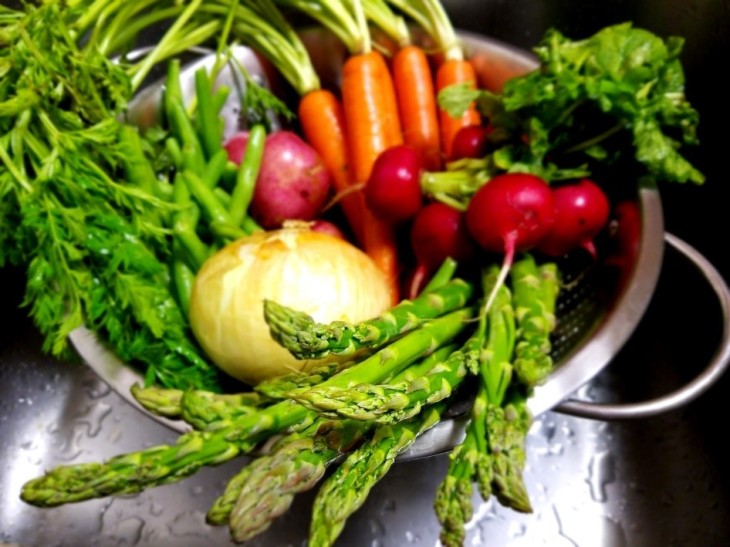
Preparing the asparagus is a little different than most vegetables. The ends of asparagus are woody, so to remove the woody area bend towards the end of the stalk until it snaps. It will snap naturally at the start of the woody part.
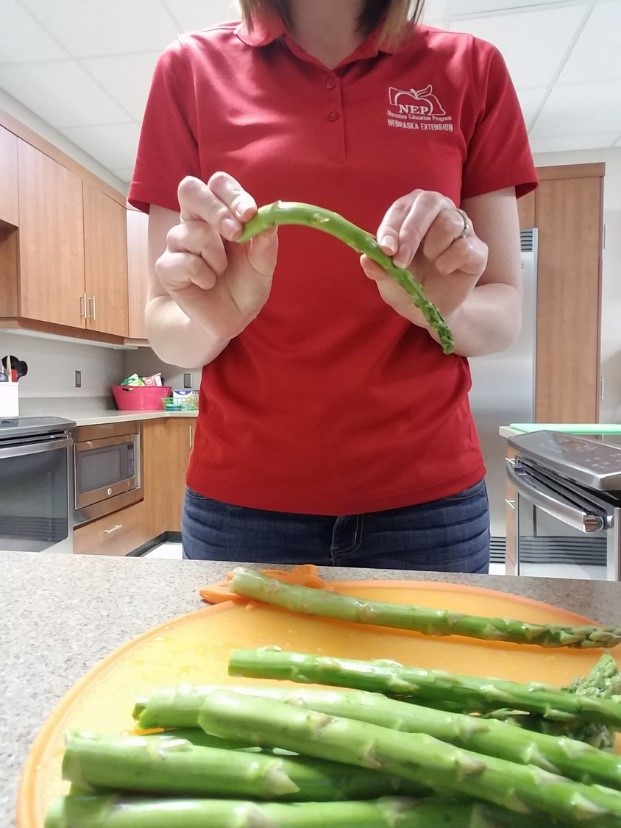
After breaking the wooded part off the asparagus, chop the asparagus into smaller pieces or any size you desire for the dish.
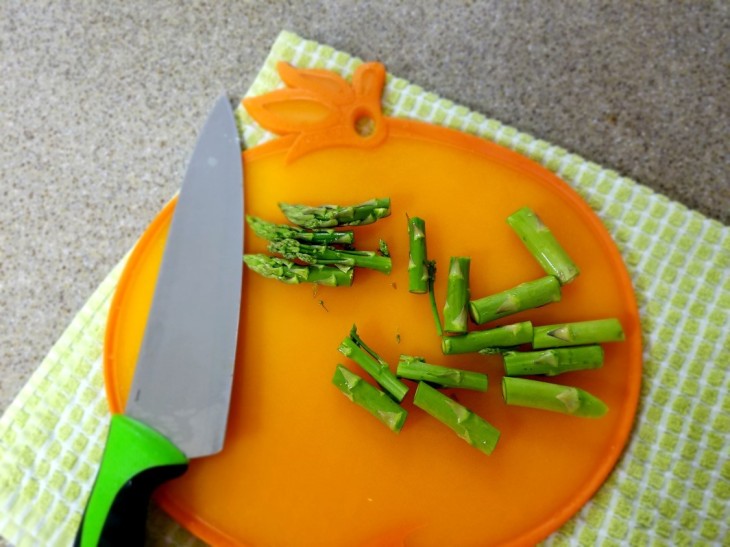
Next, prepare all of the vegetables by either chopping, slicing, or dicing them into smaller pieces. Then measure out the amounts needed for the dill, salt, and black pepper.
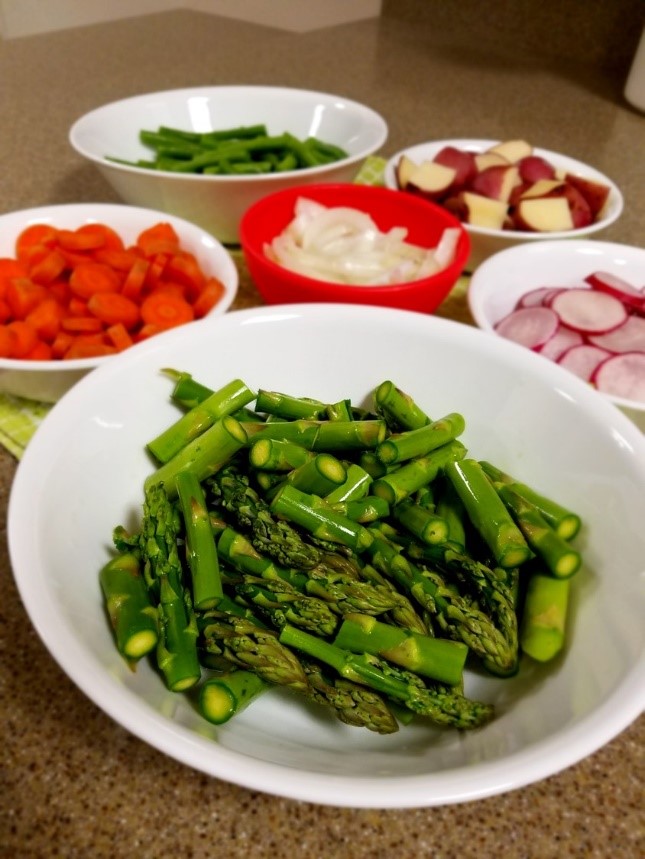
Begin sautéing the vegetables by heating oil in a skillet. Cook the onion for about 2 minutes, then add the garlic and cook another minute.
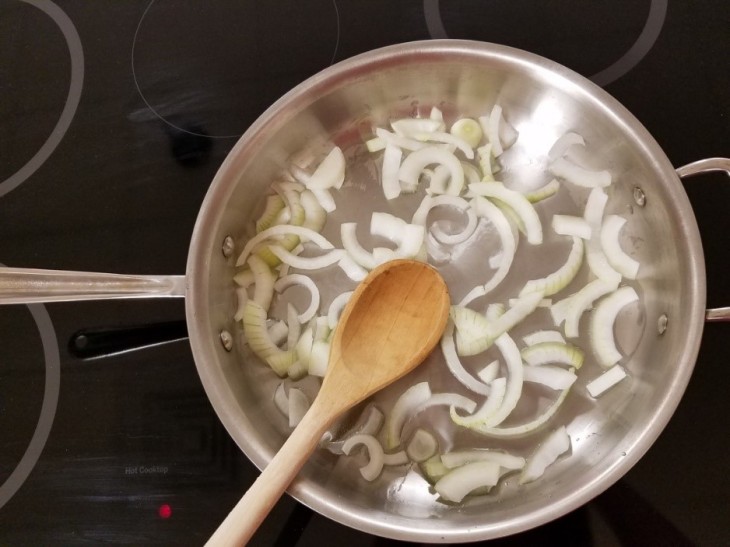
Stir in the potatoes and carrots. Cover the pan with a lid, turn the heat to low, and cook until almost tender, about 4 minutes. If vegetables start to brown, add a Tablespoon or 2 of water. Next, add the asparagus, peas, radishes, salt, pepper and dill.
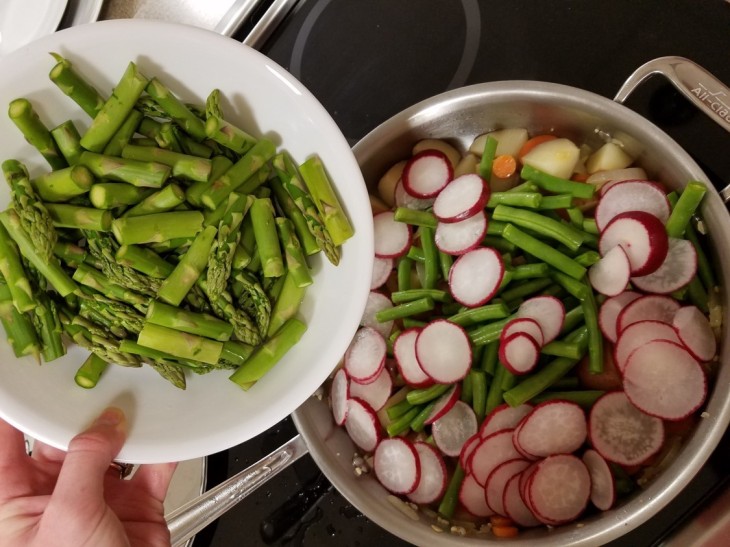
Cook until tender, about 4 minutes. Serve immediately.
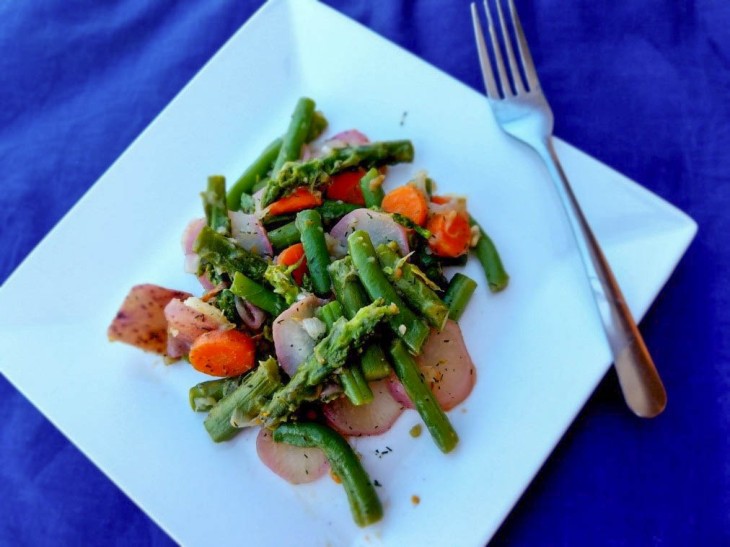
Other ways of preparing asparagus include roasting in the oven, grilling, steaming, pan frying and microwaving. If you really want to experiment with cooking asparagus, try these creative ways:
- Wrap the asparagus in turkey bacon and grill it.
- Sprinkle the asparagus with Parmesan cheese and garlic, and roast it in the oven.
- Add it to any rice or pasta dishes.
- Include it as a vegetable on pizza.
- Use it in salads.
- Add it to your favorite stir-fry.
Spring Vegetable Saute
Ingredients
- 1 tsp. olive oil
- 1/2 c. sweet onion, sliced
- 1 garlic clove, finely chopped
- 3 new potatoes, quartered
- 3/4 c. carrot, sliced
- 3/4 c. asparagus pieces
- 3/4 c. sugar snap peas OR green beans
- 1/2 c. radishes, quartered
- 1/4 tsp. salt
- 1/4 tsp. black pepper
- 1/2 tsp. dill, dried
Directions
- Heat the oil in a skillet. Cook the onion 2 minutes, add the garlic and cook another minute.
- Stir in the potatoes and carrots. Cover, turn the heat to low, and cook until almost tender, about 4 minutes.
- If the vegetables start to brown, add a tablespoon or 2 of water.
- Now add the asparagus, peas, radishes, salt, pepper, and dill. Cook, stirring often, until just tender – about 4 minutes more.
- Serve immediately.
Nutrition Information per Serving: Calories 70, Total Fat 2 g, Saturated Fat 0 g (0% DV), Cholesterol 0 mg (0% DV), Sodium 170 mg, Total Carbohydrate 13 g, Dietary Fiber 2 g, Sugars 2 g, Protein 2 g.
This post was reviewed by Morgan Hartline MS, RD, LMNT. Photos by Kylie Smith.

